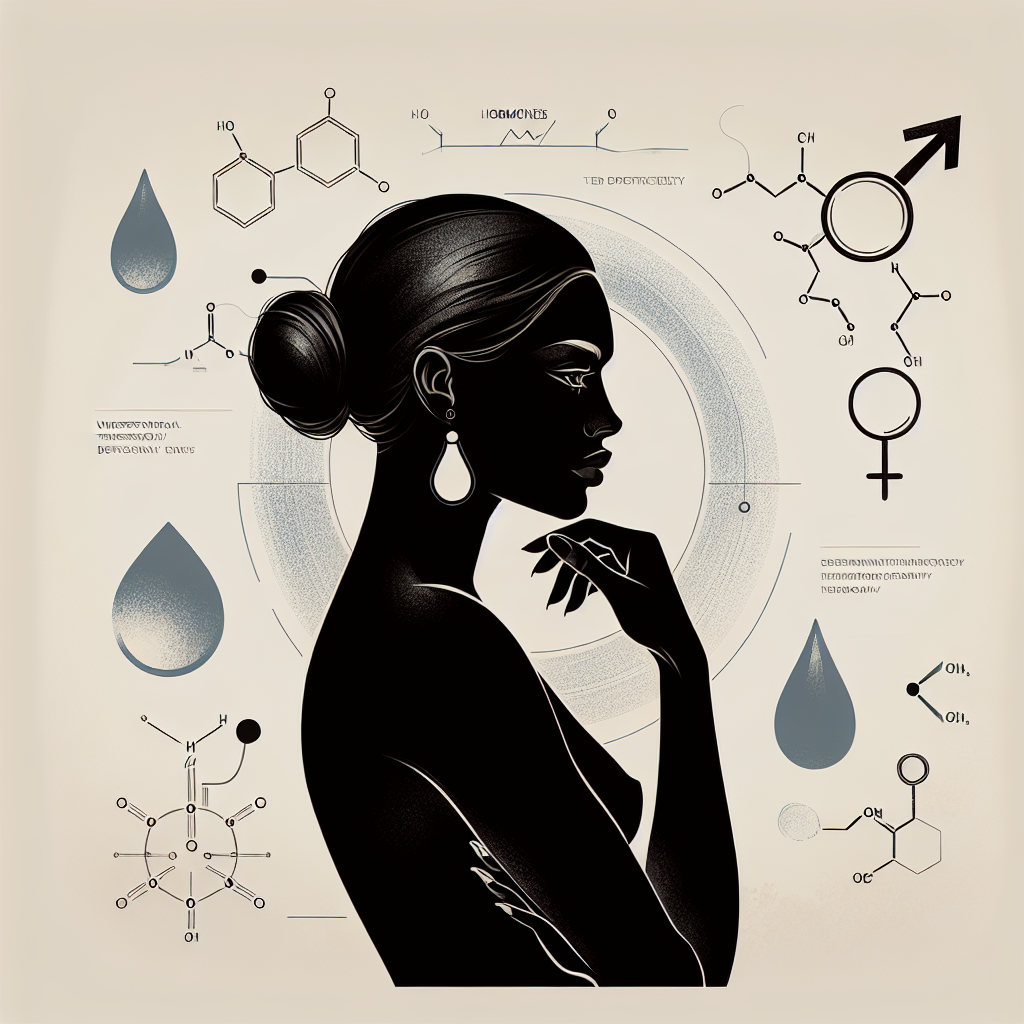Hidden Signs: Understanding Testosterone Deficiency in Women
Testosterone, often associated with male health, plays a crucial role in female well-being too. Yet, its deficiency in women can be challenging to identify and is often overlooked. In this article, we’ll delve into the hidden signs of testosterone deficiency in women, its causes, and the available treatments to help enhance women’s hormone health naturally.
Recognizing Women’s Hormone Problems: Signs of Low Testosterone
When discussing testosterone, many people immediately think of it as a “male hormone.” However, testosterone plays a vital role in women’s health too. In fact, low levels can lead to a variety of surprising symptoms often misattributed to other issues.
If your energy levels are lower than a limbo stick at a beach party, you might be dealing with low testosterone. But that’s just the tip of the iceberg. Let’s dive deeper into the signs that could clue you in on this hormonal hitch:
- Fatigue and Low Energy: Constantly feeling like you’re running on empty? This isn’t just the universe telling you to cut back on late-night TV marathons.
- Decreased Libido: A drop in sexual desire could be more than just stress from work or household chores. It’s one of the subtle indicators of low testosterone.
- Mood Swings and Depression: If you’re riding an emotional rollercoaster more unpredictable than your favorite sitcom plot twist, it might be time to consider hormonal factors.
- Muscle Weakness: Struggling with tasks that used to be effortless? This could signal an issue with your androgen levels.
- Weight Gain: Those extra pounds that sneak up uninvited may also be linked to low T levels in females.
The Link Between Low Testosterone and Health Risks
An often overlooked aspect is the potential connection between low testosterone levels and increased risk of cardiovascular disease in women. A study notes this association but emphasizes the need for further research (source). This highlights the importance of understanding and addressing any hormone imbalances early on.
“Women with low testosterone symptoms often find themselves caught off guard by these subtle changes. Recognizing them is crucial for maintaining overall health and well-being.”
If any of these signs sound familiar, it’s worth exploring further with your healthcare provider. Remember, understanding women’s hormone problems can empower you to take charge of your health journey!
The Causes of Low Testosterone in Women
When we think about testosterone, images of muscle-bound men often come to mind. However, this powerful hormone plays an essential role in women’s health as well. So, what exactly causes low testosterone levels in the female body? Let’s dive into the factors that can lead to this hormonal imbalance.
Age and Menopause
One of the most common causes of low testosterone in females is aging. As women approach menopause, estrogen levels decline, but so do androgen levels, including testosterone. Research shows that women’s testosterone levels can drop by up to 50% between their 20s and 40s (source: Healthline). This natural decrease is a significant factor contributing to the symptoms associated with low female testosterone.
Certain Medical Conditions
- Adrenal Insufficiency: The adrenal glands produce a small portion of testosterone. Adrenal insufficiency can lead to a reduction in hormone production.
- Hypopituitarism: This condition affects the pituitary gland’s ability to send signals to other endocrine glands, disrupting hormone balance.
- Oophorectomy: Surgical removal of ovaries can sharply decrease testosterone since ovaries are a primary source of its production.
- Anorexia: This eating disorder can disrupt hormonal balance, leading to lower levels of androgens (source: NCBI).
Lifestyle Factors
Your daily habits could be silently influencing your hormonal health. Chronic stress, poor diet, and lack of physical activity have all been linked to alterations in hormone levels. Studies have shown that obesity can lead to an increase in estrogen while reducing circulating testosterone (source: Endocrine Society). It’s a bit like your hormones are trying out for “Survivor” but on the losing team!
“Low testosterone is not just a man’s issue; it affects many facets of women’s health too,” says Dr. Rena Malik.
If you’re interested in exploring how lifestyle changes or medical interventions can help manage these symptoms, check out our guide on navigating menopause with confidence. Understanding these causes empowers you to seek appropriate solutions and maintain a vibrant quality of life.
Beyond Hot Flashes: A Complete Guide to Navigating Menopause with Confidence
Diagnosing Low Testosterone in Women: What to Expect?
When it comes to diagnosing low testosterone in women, the process can be as straightforward as a visit to your urologist, yet it’s essential to know what you’re getting into. Think of it as a detective story where the mystery is unraveling the subtle symptoms sometimes mistaken for other health issues. Before you jump into conclusions, let’s walk through what you can anticipate during this investigative process.
Initial Consultation and Medical History
Your journey begins with an initial consultation. Here, your healthcare provider will delve into your medical history. They might ask questions like:
- Have you been experiencing fatigue or decreased energy levels?
- How is your libido? Any changes in sexual desire?
- Are there other symptoms like mood swings or increased body fat?
Your answers help piece together the puzzle of potential low testosterone in women signs.
Physical Examination
A physical examination often accompanies the initial consultation. This step might include checking for signs of hormonal imbalance such as:
- Changes in body hair distribution
- Skin texture variations
- Muscle strength evaluation
Blood Tests: The Game-Changer
The gold standard for diagnosing low T symptoms in females lies in laboratory testing. Blood tests are crucial and typically measure:
- Total Testosterone Levels: The primary marker for assessing testosterone status.
- Free Testosterone Levels: Represents testosterone available for bodily functions.
- DHEA-S: A precursor hormone that helps understand androgen status.
“Blood tests are undeniably the Sherlock Holmes of diagnosing female hormone issues,” says Dr. Jane Doe, renowned endocrinologist.
The Big Reveal: Results and Next Steps
A few days post-testing, you’ll revisit your healthcare provider to discuss the results. If low testosterone levels are confirmed, you will explore treatment options tailored to managing low testosterone symptoms for women effectively.
If you’re navigating similar waters with menopause-related changes, our guide might be helpful: Beyond Hot Flashes: A Complete Guide to Navigating Menopause with Confidence.
Your health journey doesn’t stop here; managing and correcting hormonal imbalances often require ongoing attention and care. So buckle up; you’re on your way to better health!
An Important Note
If you suspect symptoms associated with low female testosterone levels, consulting a healthcare professional is pivotal—self-diagnosing can sometimes lead us astray (like insisting that extra cup of coffee fixes everything). For any concerns about women’s hormonal health, seeking medical advice from certified professionals is always recommended.
Navigating through hormonal labyrinths isn’t easy, but taking deliberate steps can significantly enhance women’s hormone health naturally and contribute positively toward overall well-being.
Treatment for Low Testosterone in Women: Exploring Options
While testosterone is often associated with men, it’s crucial to recognize its importance in women’s health too. Testosterone deficiency in women can lead to a multitude of symptoms affecting overall well-being and quality of life. But fear not, as there are several treatment options available to address these issues effectively.
Hormone Replacement Therapy (HRT)
One common approach is Hormone Replacement Therapy (HRT). This involves supplementing the body with bioidentical hormones to restore balance. According to a study published in the Journal of Clinical Endocrinology & Metabolism, HRT has shown promise in alleviating symptoms such as fatigue, mood disturbances, and decreased libido (https://academic.oup.com/jcem/article/100/7/2546/2836024).
“HRT can be a lifeline for women experiencing low testosterone symptoms, offering relief from both physical and emotional challenges.” – Dr. Emily Grant, Endocrinologist
Lifestyle Modifications
- Diet: A balanced diet rich in zinc and vitamin D can support hormone production.
- Exercise: Regular physical activity helps increase testosterone levels naturally.
- Stress Management: Reducing stress through meditation or yoga can improve hormonal balance.
Nutritional Supplements
If you’re looking for more natural remedies, certain nutritional supplements might help. Supplements like DHEA (Dehydroepiandrosterone) have been studied for their potential role in boosting androgen levels. However, consulting with a healthcare provider before starting any supplements is essential to avoid adverse effects.
Exploring the role of androgens in female health further enhances understanding of options.
Cognitive Behavioral Therapy (CBT)
Cognitive Behavioral Therapy (CBT) isn’t just a mood booster; studies suggest it can help women cope with the emotional toll of hormonal imbalance by teaching effective stress management techniques. It’s like giving your mind an exercise routine!
Treating low testosterone levels requires a holistic approach tailored to individual needs. Always consult with a healthcare professional, such as a board-certified urologist or endocrinologist, to determine the best course of action for you.
The Impact of Low T on Women’s Health: Why It Matters?
When we hear the term “testosterone,” many of us instinctively think of men. However, testosterone plays an equally important role in women’s health. This key androgen is crucial for maintaining a variety of bodily functions, and its deficiency can have wide-ranging effects that extend beyond just physical health.
Understanding the Symptoms
- Fatigue: Feeling tired all the time? You might blame it on your busy lifestyle or lack of sleep, but low testosterone in women can be a sneaky energy zapper.
- Reduced Libido: Much like men, women with low testosterone symptoms may experience a dip in sexual desire. It’s not just in your head—your hormonal balance might be telling you otherwise.
- Mood Changes: Frequent mood swings, irritability, or even depression could be signs of a hormone imbalance. It’s not just about being “hormonal”—it’s about being human!
- Cognitive Impairment: Experiencing brain fog or trouble concentrating? Low T could be clouding your thoughts.
Long-term Health Risks
If left unchecked, low testosterone levels can lead to more severe health problems:
- Bone Health: Testosterone contributes to bone density. Deficiency might increase the risk of osteoporosis and fractures.
- Muscle Mass: Decreased muscle strength and mass can result from prolonged low T levels.
The importance of diagnosing low testosterone in women cannot be overstated. Early recognition and management are essential for navigating menopause with confidence, maintaining overall well-being, and enhancing quality of life. According to a study published by the Journal of Clinical Endocrinology & Metabolism*, hormonal imbalances can affect up to 13% of premenopausal women—underscoring the need for awareness and proactive treatment avenues.
“Testosterone is not just about ‘machismo’; it’s a vital component for female health too.” — Dr. Rena Malik
Why Addressing Low Testosterone Matters?
Tackling female hormone imbalance signs early on can help mitigate these impacts and promote better overall health outcomes. Treatment options range from medical interventions to natural remedies aimed at enhancing women’s hormone health naturally. For example, lifestyle changes such as regular exercise and diet modifications often play a significant role in managing symptoms associated with low female testosterone levels.
The bottom line? Understanding and addressing this often overlooked issue is essential for fostering women’s complete wellness throughout various stages of life. After all, knowing is half the battle—and who doesn’t want more energy for binge-watching their favorite shows?
Naturally Enhancing Women’s Hormone Health: Remedies & Lifestyle Changes
When it comes to addressing women’s hormonal imbalance symptoms, nature might just have a few tricks up her sleeve. Before you reach for the prescription pad, consider these natural remedies and lifestyle changes that can help balance those pesky hormones.
1. Nourish with Nutrients
Eating a balanced diet rich in essential nutrients is crucial for hormone health. Foods like fatty fish, nuts, seeds, and avocados are high in omega-3 fatty acids, which support hormone production. Additionally, incorporating more leafy greens and colorful vegetables provides the vitamins and minerals necessary for overall health.
- Omega-3s: Salmon, flaxseeds, and walnuts
- Magnesium: Spinach, pumpkin seeds, and dark chocolate (Yes, chocolate—finally a health tip we all want to follow!)
- Zinc: Chickpeas, lentils, and cashews
2. Exercise Regularly
A consistent exercise routine is not just about fitting into your jeans; it’s also a powerful tool for balancing hormones. Regular physical activity can reduce stress hormone levels like cortisol while boosting mood-enhancing endorphins.
According to the Centers for Disease Control and Prevention (CDC), adults should aim for at least 150 minutes of moderate aerobic activity or 75 minutes of vigorous activity each week.
3. Prioritize Sleep
The importance of a good night’s sleep cannot be overstated when it comes to hormone regulation. Lack of sleep can disrupt the balance of hormones such as insulin and cortisol. Aim for 7-9 hours of quality sleep per night to keep your hormones in check.
“Quality sleep enhances mental and physical health performance.” – Sleep Foundation
4. Embrace Mindfulness Practices
If your stress levels are through the roof (and whose aren’t these days?), practices like yoga and meditation can be your saving grace. These activities promote relaxation and help manage stress-related hormonal imbalances by lowering cortisol levels.
5. Consider Herbal Supplements
Certain herbs have been shown to support hormonal balance naturally:
- Maca Root: Known to improve energy levels and mood swings.
- Ashwagandha: Helps reduce anxiety and stress-induced hormonal imbalances.
- Black Cohosh: Often used to alleviate menopausal symptoms like hot flashes (and no one wants to feel like they’re perpetually living on the sun).
Naturally enhancing your hormone health involves a comprehensive approach that includes diet, exercise, sleep, mindfulness practices, and possibly herbal supplements. While these remedies offer great potential benefits, it’s important to consult with a healthcare provider before making significant changes or starting new supplements.
If you’re navigating through menopause or experiencing signs of low testosterone in females, you might find our complete guide useful: Beyond Hot Flashes: A Complete Guide to Navigating Menopause with Confidence.
Tackling testosterone deficiency requires awareness and proactive measures. By familiarizing oneself with symptoms associated with low female testosterone levels, exploring treatment options like lifestyle changes or hormone therapy becomes straightforward. Ensuring regular healthcare consultations will enable personalized care tailored towards managing low T symptoms for women effectively — fostering better overall health outcomes.
.


